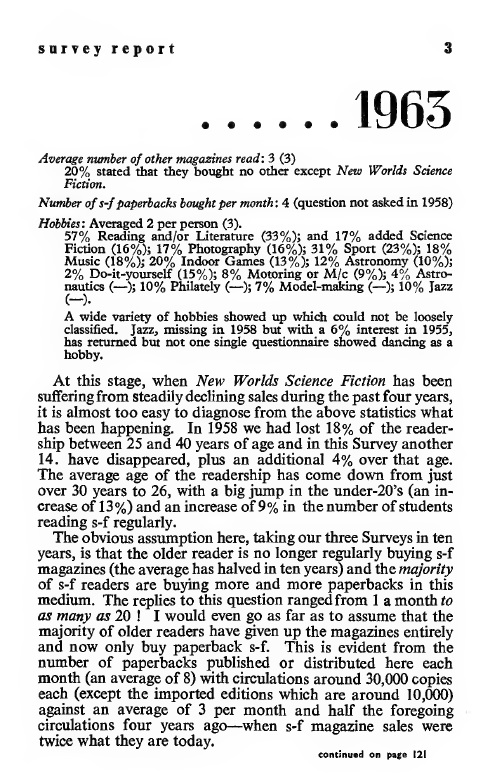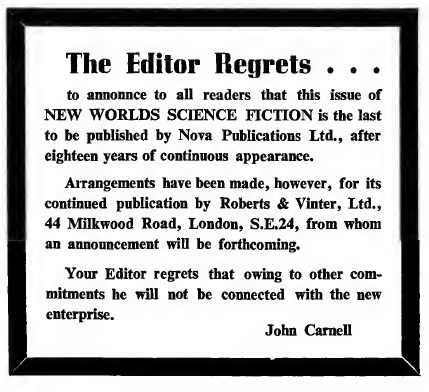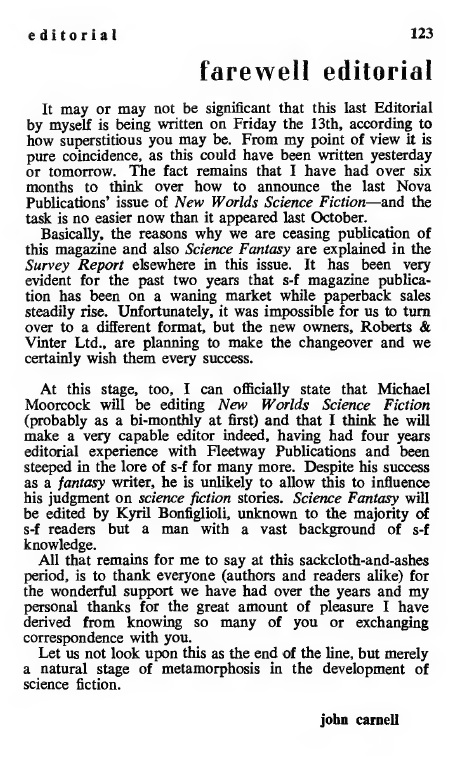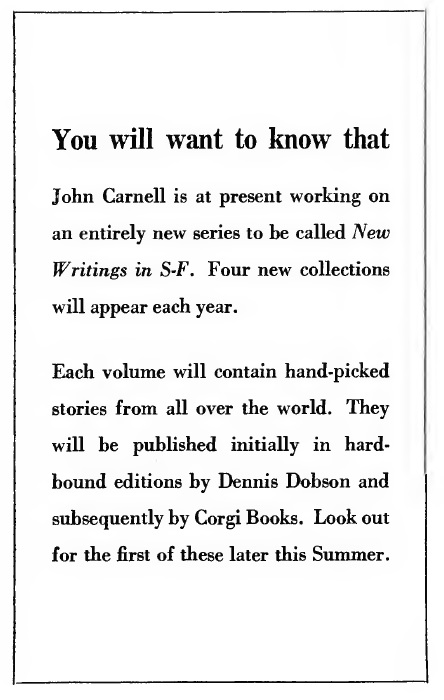
By Jessica Holmes
The caravan winds ever onwards across Cathay. Let’s catch up, shall we?
We’re a bit over halfway through our first historical serial, tagging along with Marco Polo as he travels across China to meet with Kublai Khan. With him are Tegana, a Mongol warlord and obvious baddie, Ping-Cho, a young lady from Samarkand on her way to be married, and of course, our Doctor and his companions. Tegana has been trying (and failing) to bump off our tag-alongs so he can nick the TARDIS for his master, Logai, a rival to the great Kublai Khan. And now a guard has just turned up dead. Could this journey be about to come to a sudden and bloody end?
RIDER FROM SHANG-TU
Our companions find the murdered guard, and are quick to raise the alarm. The men arm themselves, and prepare to fight. There’s a bandit attack coming (a gold sticker for whoever guesses who orchestrated that), and they’ll need all the fighters they can muster.
So they send the women into the tent.
On your own heads be it, lads.
The Doctor advocates taking shelter in the TARDIS, but to no avail, because Marco is just bit too stubborn for his own good. Tegana tries to convince Marco that the Doctor and his companions murdered the guard. To be fair, they did have the motive and opportunity, but what about the means?
I suppose Ian could have made use of the forgotten art of war crockery.
Marco doesn’t really listen to Tegana, so his stubbornness can be good for something, it seems.
Still, they’re going to need more than a few swords if they’re going to win against a pack of bandits. Ian comes up with the ingenious idea to throw bamboo on the fire. Bamboo is a hollow grass, so there’s air inside each stick. What happens to air when it heats up? It expands. And what happens if the grass can’t expand with it?
Pop!
The bandits turn up, and we’re treated to a bit of swashbuckling action as the battle commences. In all the hubbub, Tegana kills the leader of the bandits, sending his secret complicity to the grave with him, and the Doctor dusts off his fencing skills.

Ian’s exploding bamboo trick pays off, and the bandits scatter, leaving the caravan free to lick its wounds and get going again. The Doctor is smart enough to figure out that Tegana was in league with the bandits (well, duh), and Marco starts to warm to the companions again.
A courier from the great Khan arrives, to the surprise of everyone, for they are many, many leagues yet from Shang-Tu. He explains that he had a fresh horse waiting for him at waystations every league, and he wears bells on his clothing to let the ostlers know when he’s about to arrive, so as to waste as little time as possible.
You see, he had an extremely important message for them. A matter of grave urgency.
Kublai Khan says: Hello, how are you?
Oh. Nice of him, I suppose.
Then off we go to Cheng-Ting, the ‘white city’.
The set and costumes here are lovely. I’ll be waxing lyrical about this in a little bit.

What I will not be waxing lyrical about, however, is this fellow here, whose name I never did catch, because I was so distracted by how bizarre his intonation and mannerisms are. He’s the most pompous prat in all of China.
The Doctor’s uncharitable but accurate impression of him is very funny. So, perhaps it was deliberate.
A one eyed man, Kuiju, meets Tegana in the stables, and they strike a deal. Kuiju will steal the TARDIS for Tegana. In great trade caravans, it is so easy for things to be misplaced, after all.
I just had a thought. How heavy is the TARDIS? We saw a few additional rooms during The Edge Of Destruction, so we know that the TARDIS is at least the size of a house on the inside. So, does the weight of the TARDIS match the outer dimensions, or the inner dimensions, or both?
I’m just wondering how they’re managing to transport it. They seem not to have had any problems loading it onto the wagon, so perhaps it does only weigh as much as the outer dimensions. That’ll make it easier to steal, I suppose.
I feel like that probably breaks some law of physics. Don’t ask which. I’m not a Science Lawyer.
Well, it looks like it’s soon to be a moot point, because Ping-Cho’s stealing the keys to the TARDIS! She promised Marco that she wouldn’t reveal to the others where the keys were hidden, but she didn’t say anything about not taking them herself.

I would honestly love it if Ping-Cho came along with the companions as a permanent addition to the crew. Susan gets a friend her own age, Ping-Cho doesn’t have to marry a man old enough to be her grandfather, everybody wins!
But it’d also bring the serial to an end two episodes early, and I’m quite enjoying myself, thank you very much.
Let’s throw a Tegana in the works.

4 out of 5.
MIGHTY KUBLAI KHAN
Tegana foils the companions’ attempt to escape, and Ian ‘confesses’ to taking the key, to protect Ping-Cho. With that, the caravan moves on, and our next stop is at an inn between Cheng-Ting and Peking.
Ian tries once again to convince Marco to give the TARDIS back, and this time, he throws all caution to the wind and flat out tells him that he’s from the future, the TARDIS flies through time and space, and no, they can’t just hang about and get a ship back home from Venice.
Marco, though having seen some wild things in his travels across the far east (like a burning black stone!), has to draw the line somewhere, and the notion of travelling freely between tomorrow, today and yesterday is about a hundred leagues over that line.
What’s more, Marco figures out that Ian lied about stealing the key, and deduces that the only reason he would lie is to protect the real thief: Ping-Cho, who is nowhere to be found.
She has slipped out and is now making her less-than-merry way back to Samarkand, so Ian offers to ride back to look for her.
Ian, can you actually ride a horse? I mean really, properly ride a horse? No, plodding along the beach on a donkey when you’re holidaying in Blackpool doesn’t count.
Ping-Cho makes it back to the way station, and runs into Kuiju as he puts his scheme into action, posing as an envoy from the Khan and tricking that pompous official into letting him take possession of the TARDIS. Oh, and while he’s at it, he scams Ping-Cho out of all her money when she tries to book passage to Samarkand with his caravan.
Nice chap.
Just when it seems Ping-Cho is royally stuffed, along comes Ian! And with the arrival of the real envoy from Shang-Tu, it doesn’t take anyone long to realise that the TARDIS has been stolen.
I think I’d have really liked Ian if he’d been one of my teachers. In another life he’d have been a hero in one of those old adventure serials. Ergo, a cool teacher.
Ian figures the TARDIS is most likely being taken on the road to Karakorum, which was the capital of Genghis Khan’s empire, though by now it’s little more than a field. The Mongols were, and still are, a nomadic people, after all. Their cities don’t tend to stay in one place.
Meanwhile, in Shang-Tu, the companions have finally arrived!
The set for the summer palace is gorgeous. Throughout this serial the sets have been impressive, and the palaces are sublimely ornate. I’ve managed to procure a few colour images taken from production, so as we can see they’re even more beautiful when not viewed on a monochrome television set. The level of detail and care that’s gone into every inch of the production certainly shows, and sells the palace as the splendid heart of this mighty empire.
Still, for all the majesty of the Yuan dynasty, the Doctor isn’t about to kowtow to some puny Earth ruler. He has a bad back, anyway. Perhaps he should try a curtsey?
And now, dear readers.
The moment you’ve been waiting for.
Enter the mighty Kublai Khan!

Were you expecting him to come galloping in on horseback or something? That’s more his grandfather’s style. Kublai Khan is, as Marco Polo notes, ‘the greatest administrator the world has ever seen’, which is a weird boast, but I’ll take his word for it. His vizier is a bit uptight, but the Khan turns out to get along with the Doctor quite well, and it’s not long before the pair potter off to have a soothing bath in the local healing waters.
Back at the way station, Ping-Cho and Ian track down Kuiju (and also the TARDIS), and at knife-point the thief admits that Tegana paid him to steal the ‘caravan’.
And speak of the devil, here he comes!

3.5 out of 5. Nothing extraordinary, but not bad.
ASSASSIN AT PEKING
The confrontation turns deadly when Kuiju ends up on the wrong end of a knife, and moments later the courier from Shang-Tu arrives. Tegana claims Ian was trying to steal the ‘caravan’, Ian claims Tegana was plotting against the Khan, and the courier, having just come to deliver a message and being far too busy to play judge, more or less throws up his hands and says it’s up to the Khan, who has left Shang-Tu for Peking.
Speaking of Peking, we have a lovely set once again. I don’t know much about Chinese art, so I couldn’t say for sure if it’s appropriate to the right period of Chinese history, or whether it’d be like seeing a Norman Rockwell painting in George Washington’s study.

Period accurate or not, it sure does look pretty.
The Doctor and the Khan are getting along happily, drinking tea and playing backgammon. Oh, and betting colossal amounts of lands, goods and chattel on the outcome. I think the Doctor owns about half of the empire now. What’s more, the Doctor seems to have got over his aversion to bowing, as he manages just fine when the Empress shows up.
Lovely costumes once more. Very pretty fabric and some lovely cuts, as can be expected of Chinese textiles.

However.
They’re the wrong period.
Yes, they’re Chinese. They look very authentic. Some nice, authentic, Qing dynasty clothing. The Qing dynasty was last in power in 1912. The last Qing Emperor is actually still alive.
This serial is set during the Yuan dynasty, which ended in 1368. Oh, and we have the entire Ming dynasty separating these two periods.

Courtesy ofWikimedia Commons
This fresco, dated to the Yuan dynasty, shows some differences in the style of clothing. What jumps out to me most are the abundance of flowing fabrics and wrapped robes fastened with a belt. I could be wrong, but the costumes just don’t look like Yuan dynasty clothes to me.
I can’t claim any expertise but I think this might be comparable to seeing Charlemagne in a ruff.
The betting heats up when the Doctor asks to put up the TARDIS as stakes in their game. It’s a big risk, but it might be his best chance of reclaiming his ship. The Khan, however, would much rather he took something a bit less valuable, like the island of Sumatra.
I’m fairly certain that’s not yours to give, Kublai. Do you even have a navy? From what I know of the Mongols they were more into land-based empire building. Horses don’t do all that well on water.
Along comes Marco, and shortly after Ian turns up with Tegana and Ping-Cho, and I will give you three guesses as to whose accounting of events the court sides with. Because of course, Tegana is a Mongol, and Ian is not.
Oh, and Ping-Cho is getting married tomorrow. Now, I think weddings are great. Everyone has fun and you get free cake. But I’m also a big fan of this neat concept called ‘consent’ which seems to be glaringly absent in this marriage. Poor Ping-Cho.
Marco finally admits that laying claim to the TARDIS was wrong of him, but what’s done is done, and Kublai won the game of backgammon anyway.
A sentence ago I said ‘poor Ping-Cho’, but it looks like she’s in luck! Her husband-to-be? A little less so.
Her fiancé, so excited to get to spend the rest of his life with his pretty young bride, decided to try and extend his time on Earth with an ‘Elixir of Life’.
…Made of sulfur and quicksilver.
Something similar happened to the first Qin emperor, and the first man to unify China, Qin Shi Huang, who took mercury pills in the hopes he would live forever.
He did not live forever.
Ping-Cho is much relieved at the old man’s death, though she is smart enough not to be too open about that fact. She does, however, decide to stay in the court of Kublai Khan. Who knows, perhaps she’ll meet someone nice. It’s a bit too convenient for my liking, but still a nice little nod to Chinese history.
Marco, however, is feeling defeated. His gift didn’t work and the Khan no longer trusts him. It looks like Tegana’s won.
Good for him, but what does he want? What is Tegana’s game? Logai, his master, could attack Peking, but Kublai’s superior numbers would surely crush him.
But what is an army without a leader? Kublai is an old man, after all. It wouldn’t be hard to kill him. Especially if you’re a strong young warlord who has been welcomed into the city with open arms.

Oh, dear.
Realising the danger, the companions rush to the Khan’s chambers, warning Marco along the way, just as a messenger arrives and informs them that as they feared, Logai’s army is marching on Peking!
In the throne room, the Khan narrowly escapes death when Tegana kills his vizier by mistake, and it buys him just enough time for Marco and company to arrive, and we at last get the duel we’ve been waiting for, a thrilling clash of steel, a dance of blades, between the warlord and the explorer.

Marco succeeds in disarming Tegana, but before he can be brought to justice, Tegana grabs a guard’s sword and falls upon it, and all his schemes, along with the man himself, come to naught and slump onto the throne room floor.
With Tegana defeated, Marco hands the Doctor the keys to his TARDIS. Everyone says a hasty farewell, and the companions pile in, with the ship vanishing into the ether a moment later as the court looks on in astonishment.
Marco apologises to the Khan for giving away the gift from under his nose, but the Khan shrugs and quips that the Doctor would only have won it back in a game of backgammon anyway. Still, it’ll be quite a tale to tell everyone back in Venice. That is, assuming anyone believes it.
Well, poor old Marco Polo had great trouble convincing any of his contemporaries that most of what he wrote was true. Even the bit about seeing unicorns. Look it up.
4.5 out of 5, largely for the swordfight.
CONCLUSION
So, that was Marco Polo. I quite enjoyed our journey across China, though the serial is not without its flaws. It drags in places, I began to find everyone’s obliviousness to Tegana’s obvious scheming quite irritating after a while (the perils of invoking dramatic irony), and as I noted last time there’s the disappointing casting choices, along with I think some issues of historical accuracy when it comes to design. Also, the ending is a bit abrupt.
However, this is the most impressive production the Doctor Who team have put on for us yet, bringing the grandeur of a Hollywood epic to the small screen. It’s not quite Cleopatra in terms of scale (or budget), but I definitely feel a similar sense of ambition in this story of great journeys, great rulers and great treachery.
All in all? Well worth the watch, and more of this sort of thing, please and thank you.
THE SCORE
Now, the maths says (factoring in the score I forgot to include for The Wall Of Lies) that this serial gets a 3.57, but I’m feeling generous, and because of the quality of the latter half I’ll be nice and bump it up to a 4.
4 out of 5 stars
[Come join us at Portal 55, Galactic Journey's real-time lounge! Talk about your favorite SFF, chat with the Traveler and co., relax, sit a spell…]








![[April 10, 1964] Piercing the night (Gemini, Zond, Kosmos 28, and Explorer 9)](https://i0.wp.com/galacticjourney.org/wordpress/wp-content/uploads/2019/04/640410gemini.jpg?resize=672%2C372)

![[April 8th, 1964] Pooooolo! (<i>Doctor Who</i>: Marco Polo, Parts 5 to 7)](https://i0.wp.com/galacticjourney.org/wordpress/wp-content/uploads/2019/04/640408costumes.jpg?resize=672%2C372)












![[Apr. 6, 1964] The art of word-smithing (May 1964 <i>IF</i>)](https://i0.wp.com/galacticjourney.org/wordpress/wp-content/uploads/2019/04/640406cover.jpg?resize=672%2C372)





![[Apr. 4, 1964] A taste of brine (the book and movie, <i>The Amphibian</i>)](https://i0.wp.com/galacticjourney.org/wordpress/wp-content/uploads/2019/04/640403AM_1.jpg?resize=672%2C372)








![[Apr. 2, 1964] The Joke's on me (the uninspiring April 1964 <i>Analog</i>)](https://i0.wp.com/galacticjourney.org/wordpress/wp-content/uploads/2019/04/640402cover.jpg?resize=672%2C372)














![[March 31, 1964] 7 Faces and 7 Places (The movie, <i>7 Faces of Dr. Lao</i>)](https://i0.wp.com/galacticjourney.org/wordpress/wp-content/uploads/2019/03/640331a7_Faces_of_Doctor_Lao_.jpg?resize=213%2C325)








![[March 29, 1964] Five by Five (March Galactoscope)](https://i0.wp.com/galacticjourney.org/wordpress/wp-content/uploads/2019/03/640329marooned-1.jpg?resize=417%2C372)







![[March 27, 1964] The End of an Era? Not With a Bang…. ( <i>New Worlds, April 1964</i>)](https://i0.wp.com/galacticjourney.org/wordpress/wp-content/uploads/2019/03/640327cover.jpg?resize=409%2C372)






![[March 25, 1964] The Face of Terror (<i>The Twilight Zone</i>, Season 5, Episodes 20-24)](https://i0.wp.com/galacticjourney.org/wordpress/wp-content/uploads/2019/03/640325b.jpg?resize=672%2C372)






![[March 23, 1964] What's New? Not Much (April 1964 <i>Fantastic</i>)](https://i0.wp.com/galacticjourney.org/wordpress/wp-content/uploads/2019/03/640323cover.jpg?resize=496%2C372)








